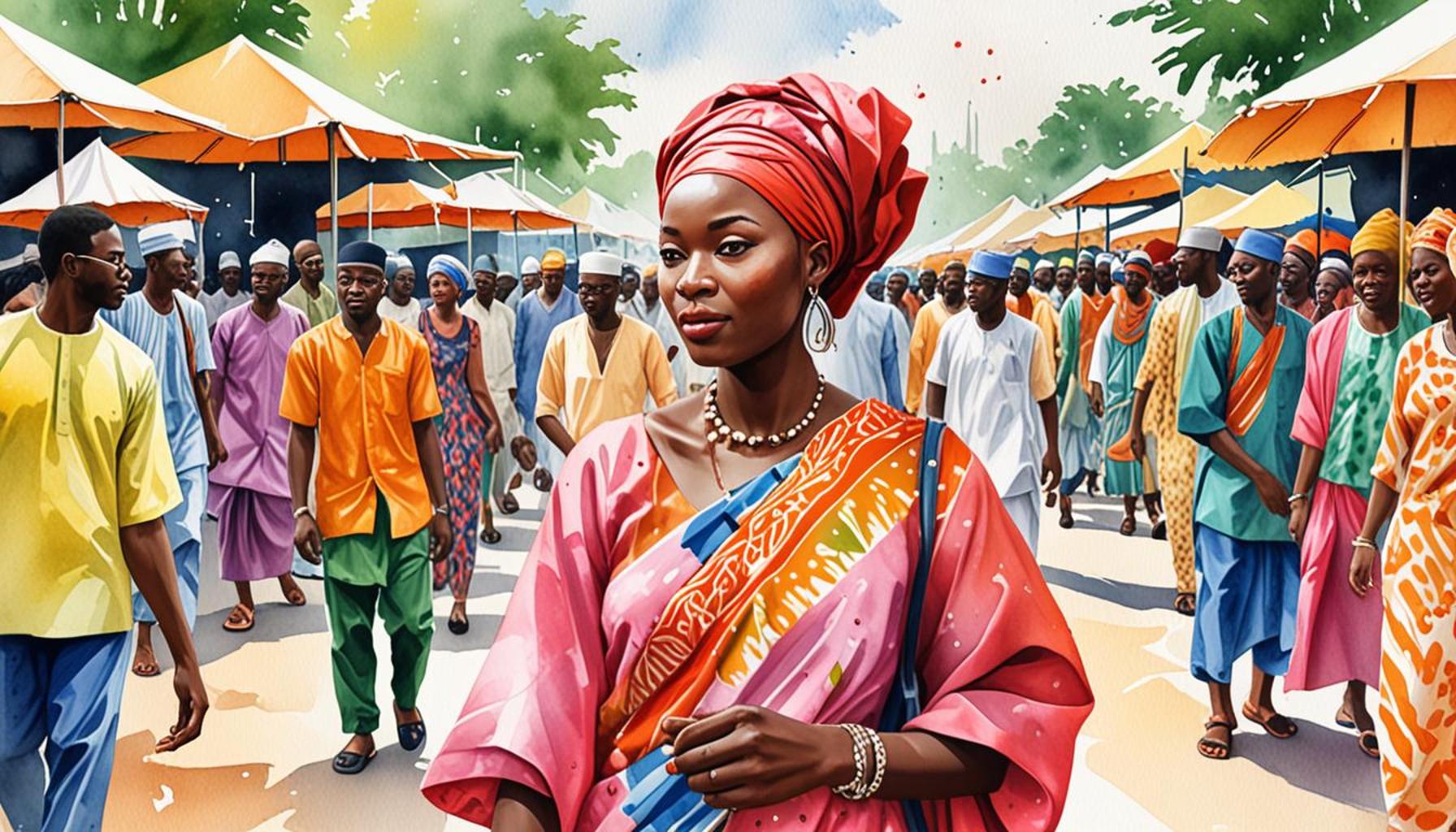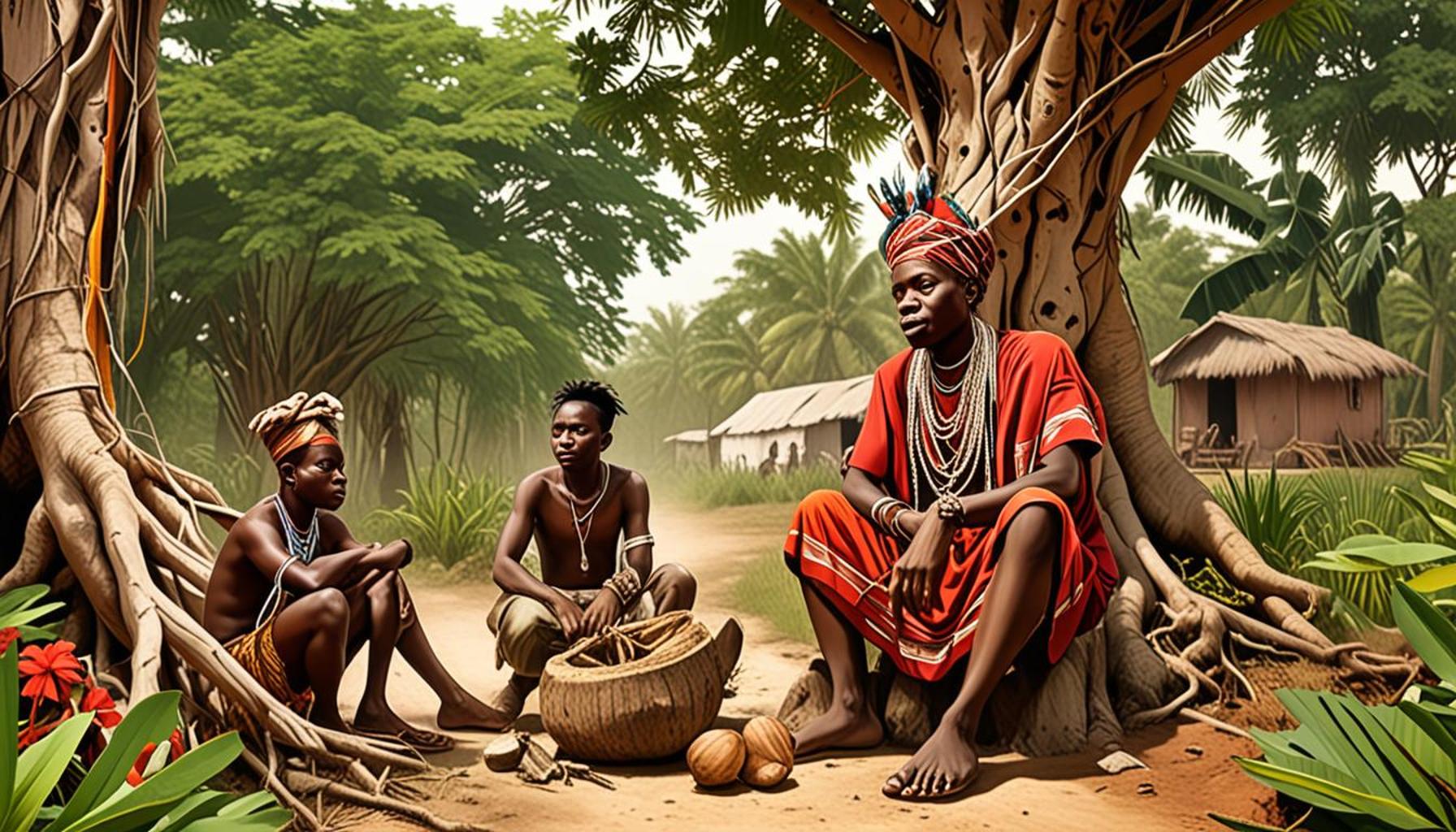Film Scripts: Exploring Iconic Locations of Nigerian Movies and Their Cultural Influences

Experience the Allure of Nigeria’s Cinematic Settings
Nigerian cinema, commonly known as Nollywood, serves as a captivating window into the nation’s multifaceted cultural landscape. The artistry of film in Nigeria extends far beyond the narratives, leveraging various iconic locations that frame the stories being told. These diverse settings not only enrich the cinematic experience but also provide insight into the daily lives, traditions, and aspirations of the Nigerian people.
Among the most prominent locations that have become synonymous with Nollywood productions is the Lekki-Ikoyi Link Bridge. This modern architectural marvel connects the affluent areas of Lekki and Ikoyi in Lagos, epitomizing urban sophistication. With its striking views of the Lagos skyline, the bridge has served as an evocative setting in several urban dramas, highlighting themes of aspiration, love, and the hustle of city life. In these stories, the bridge often symbolizes the connection between dreams and reality, capturing the essence of Lagos as Nigeria’s economic powerhouse.
Moving towards history, Olumo Rock, situated in Abeokuta, stands tall as a beacon of Nigeria’s rich cultural heritage. This colossal rock not only presents breathtaking views but is also steeped in folklore, making it an ideal backdrop for films that delve into themes of spirituality and resilience. Many filmmakers utilize Olumo Rock as a character in itself, drawing parallels between the struggles of their protagonists and the stories rooted in the rock’s ancient history. Visitors to this site may be treated to film scenes showcasing traditional festivals, thereby linking the beauty of Nigeria’s natural landscape with its vibrant cultural expressions.
Additionally, the upscale district of Victoria Island is a popular choice for romantic comedies, where the dazzling nightlife and stunning beaches create an enchanting environment. Many Nollywood films feature luxurious restaurants, lively parties, and intimate beach settings, encapsulating the energy and vibrancy of urban Nigerian life. This location helps to set the tone for love stories that explore both the exhilaration and complexities of modern romance in Nigeria.
These settings serve more than just as scenic backdrops; they embody the socio-economic conditions, cultural traditions, and collective aspirations of Nigerian society. With each film shot in these iconic locations, audiences are not only entertained but also educated about the intricate narratives that define contemporary Nigeria.
As we take a closer look at these iconic locations, it’s crucial to understand their roles in shaping film narratives and their impact on both local and global perceptions of Nigeria. Exploring the stories intertwined with these landscapes opens a door to understanding the rich tapestry of Nigerian culture. Join us on this journey to uncover the beauty and significance of Nigeria’s cinematic offerings, where every frame tells a story of the nation’s heart and soul.
RECOMMENDED: Check out this similar article
Unearthing the Cultural Significance of Nollywood’s Iconic Settings
Nollywood is renowned for its dynamic storytelling and vivid portrayals of life in Nigeria, and the locations chosen for these films play a pivotal role in shaping their narratives. Each chosen venue is more than just a beautiful backdrop; they often represent deeper cultural themes and societal issues that resonate with audiences both locally and internationally. Understanding the influence of these locations offers a unique lens through which to appreciate the art of Nigerian filmmaking.
One striking example is the National Theatre, located in Lagos. This iconic structure, which symbolically reflects the vibrant arts scene of Nigeria, often features in films portraying the struggles and triumphs of artists. Its unique architecture, reminiscent of a flower, serves as a pulsating heart of cultural activities. With its roots steeped in performance arts, the National Theatre frequently hosts film premieres and festivals, thus becoming not just a physical space, but a significant cultural landmark in the storytelling process. In films, it often alludes to the aspirations of creativity, showcasing characters who navigate the complexities of the arts industry.
In contrast, the lush Obudu Mountain Resort offers a serene and breathtaking escape that has been featured in several romantic dramas. Nestled in Cross River State, this location is a favorite for filmmakers who wish to evoke emotions tied to love and serenity. The picturesque landscape, along with its rich biodiversity, invites audiences into a world of romance and adventure. By integrating such a setting, filmmakers enhance their narratives with themes of connection to nature’s beauty, reflecting the psychological landscapes of their characters.
The bustling markets of Balogun Market in Lagos provide another contrasting iconic location that thrives within Nollywood narratives. Often depicted in films focused on the hustle and bustle of urban life, these markets showcase the vibrancy and micro-economies present in Nigeria. Through scenes of bartering and community interaction, audiences gain insight into the socio-economic challenges that many Nigerians face. The sights and sounds of the market interweave with the storyline, immersing viewers in the cultural fabric of Nigerian society.
- Lekki-Ikoyi Link Bridge: Represents urban sophistication and aspirations.
- Olumo Rock: Functions as a character symbolizing resilience and spiritual connection.
- National Theatre: Highlights the struggles of artists within the vibrant arts scene.
- Obudu Mountain Resort: Captures themes of love and nature’s tranquility.
- Balogun Market: Depicts the realities of urban trade and community life.
As we traverse these iconic locations, it becomes clear that they are woven into the very fabric of Nigerian cinema. They not only serve cinematic purposes but also highlight the narratives that resonate with the diverse cultural experiences of the Nigerian populace. This interplay enhances the storytelling, making it relatable and reflective of a unique cultural identity that deserves recognition on both national and international stages. Thus, Nollywood serves as a powerful vehicle for exploring the rich tapestry of Nigeria’s culture through its iconic filming locations.
| Category | Description |
|---|---|
| Cultural Significance | Nigerian movies often reflect the rich tapestry of local traditions, languages, and belief systems, showcasing diverse cultural practices through iconic locations. |
| Tourism Boost | These films not only entertain but also promote tourism by attracting viewers to explore the beautiful landscapes and historical sites depicted in film, fostering appreciation for Nigeria’s heritage. |
In exploring the lively world of Nigerian cinema, one cannot overlook the profound connection between film scripts and the portrayal of iconic locations that reflect the country’s vast cultural influences. From the vibrant streets of Lagos to the serene landscapes of the Niger Delta, these settings become characters in their own right, enriching the narrative and providing a backdrop for critical social commentary.Furthermore, the films often serve as a documentary lens, capturing contemporary issues faced by different communities while honoring their long-standing customs. Audiences are offered a window into the regional diversity of Nigeria, reinforcing cultural pride. Additionally, landmarks featured in films frequently turn into tourist attractions themselves, as fans of the movies journey to these sites, eager to experience the stories they’ve seen on screen firsthand.The unique marriage of visual storytelling and cultural representation in Nigerian films not only preserves but also elevates the narrative of a nation, inviting worldwide audiences to engage and appreciate its vibrant, multifaceted culture. As more filmmakers begin to harness these iconic locations, the future holds much promise for further exploration and discovery.
LEARN MORE: This related article may interest you
Influencing Narratives Through Geography and Heritage
The locations featured in Nollywood films often transcend mere settings, acting as vital characters in their own right. This allows filmmakers to communicate complex narratives rooted in the rich cultural heritage of Nigeria. One particular site that exemplifies this notion is the Aso Rock, a prominent natural feature in Abuja, which represents the strength and resilience of the Nigerian people. In various films, Aso Rock is often depicted as a symbol of power and governance, framing stories that explore themes of political struggle and societal change. The visuals of this majestic rock towering above the capital enrich the cinematic experience, connecting viewers to the core themes of national identity and the socio-political landscape.
Another fascinating location is the Cultural Centre in Abidjan, often mistaken for a location in Nigeria due to its significant portrayal in Nigerian films. This center, displaying traditional arts and crafts, immerses viewers in the diverse cultural elements characteristic of West Africa. By choosing this location for storytelling, filmmakers reinforce the interconnectedness of nations within the region, while also showcasing Nigeria’s artistic heritage. The films shot here often celebrate local traditions and heritage, emphasizing the importance of cultural preservation.
The picturesque Sapo National Park, located in Liberia but frequently portrayed in Nigerian films, serves as an extension of the scenic beauty and biodiversity found in Nigeria. It represents ecological themes and the importance of conservation, reinforcing contemporary narratives that address environmental challenges faced by the country. By juxtaposing ecological issues with personal narratives, filmmakers not only create compelling stories, but also raise awareness about crucial topics affecting the landscape of Nigeria.
- Obudu Mountain Resort: Evokes themes of romance and tranquility in cinematic stories.
- Aso Rock: A symbol of national strength, framing narratives around political struggles.
- Cultural Centre in Abidjan: Highlights the shared heritage and regional connections in West African cinema.
- Sapo National Park: Brings environmental awareness into the forefront of compelling narratives.
Furthermore, filmmakers utilize locations such as the Lakowe Lakes Resort, which embodies a blend of modernity and nature, to examine contemporary themes of socialization and leisure. This location often appears in stories exploring generational shifts and urban migration. It visually represents the desire for escapism among younger audiences, providing a stark contrast to the often harsh realities depicted in other genres.
As the film industry continues to evolve, the resurgence of interest in indigenous locations indicates a shift towards celebrating local environments. Filmmakers are increasingly looking within Nigeria, from the cultural vibrancy encapsulated in cities like Enugu and Ibadan, to the historical richness of Old Oyo National Park. Each site chosen for filming serves not only as a picturesque setting but as an opportunity to delve into Nigeria’s profound history, traditions, and the collective memory that shapes its people.
In exploring these varied landscapes, it becomes evident that Nollywood is not merely telling stories; it is weaving a narrative tapestry that captures the essence of Nigeria’s cultural richness. The influence of these locations impart a deeper understanding of Nigerian society and the cultural contexts that filmmakers strive to articulate through their craft.
ADDITIONAL INSIGHTS: Expand your understanding here
Conclusion: The Cinematic Prism of Nigeria’s Heritage
The exploration of iconic locations in Nigerian films offers a rich lens through which we can understand the intricate relationship between culture, narrative, and environment. From the commanding presence of Aso Rock, symbolizing national strength, to the culturally vibrant Cultural Centre in Abidjan, each location enhances storytelling by grounding narratives in a relatable context. This practice not only provides stunning visuals but also fosters a deeper connection to the cultural and historical undercurrents that define Nigerian identity.
Furthermore, by showcasing sites like the serene Obudu Mountain Resort and the ecological beauty of Sapo National Park, filmmakers are tapping into contemporary themes that resonate with audiences today, such as love, adventure, and environmental stewardship. The thoughtful selection of diverse locations signifies a broader shift in Nollywood towards celebrating local landscapes, while simultaneously addressing pertinent social issues, making each film a multifaceted exploration of the human experience.
Nigeria’s cinematic landscape serves as a testament to the country’s rich and varied heritage, allowing filmmakers to convey profound messages through visually compelling settings. As more filmmakers continue to draw inspiration from Nigeria’s geographical and cultural splendor, the potential for storytelling expands dramatically. Thus, understanding these locations not only enhances our appreciation of Nollywood but also invites us to engage with the narratives they reflect, allowing audiences to embark on their own journeys of discovery through the prism of cinema.


